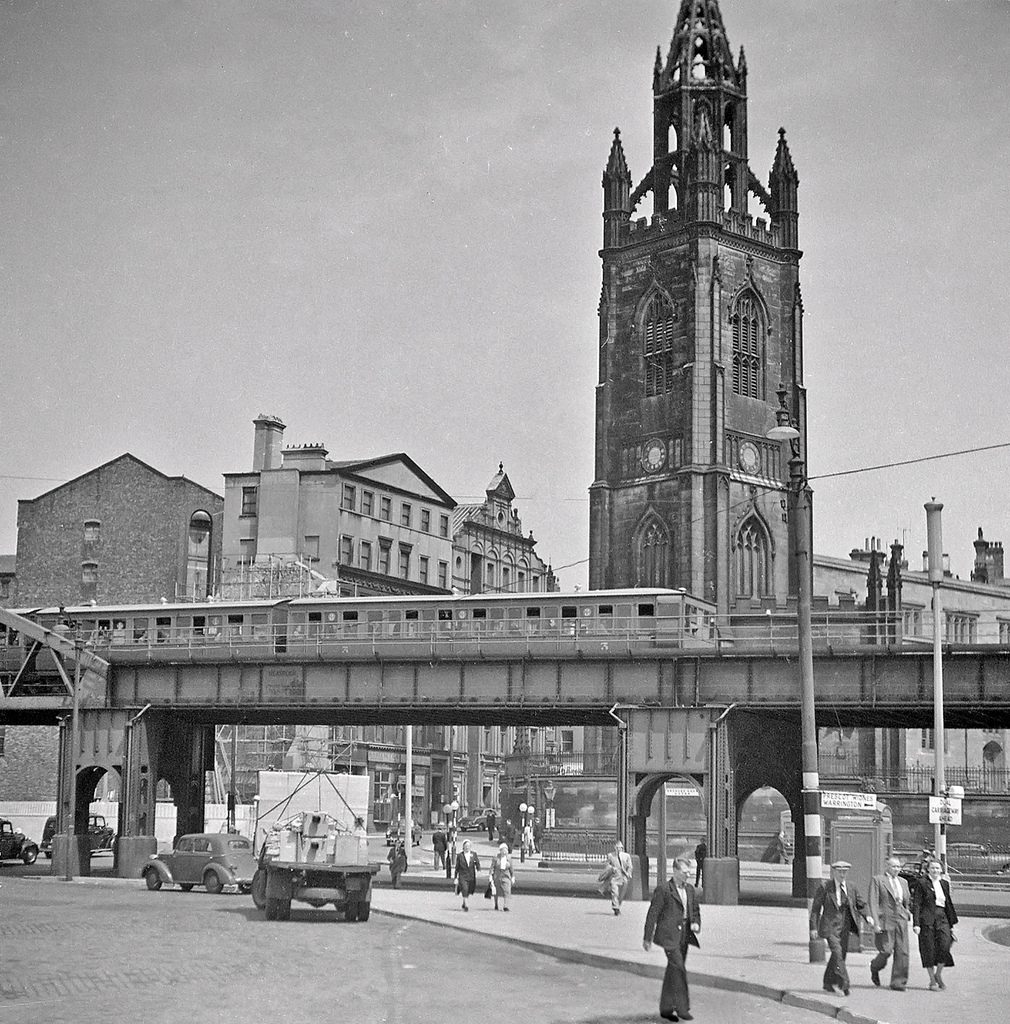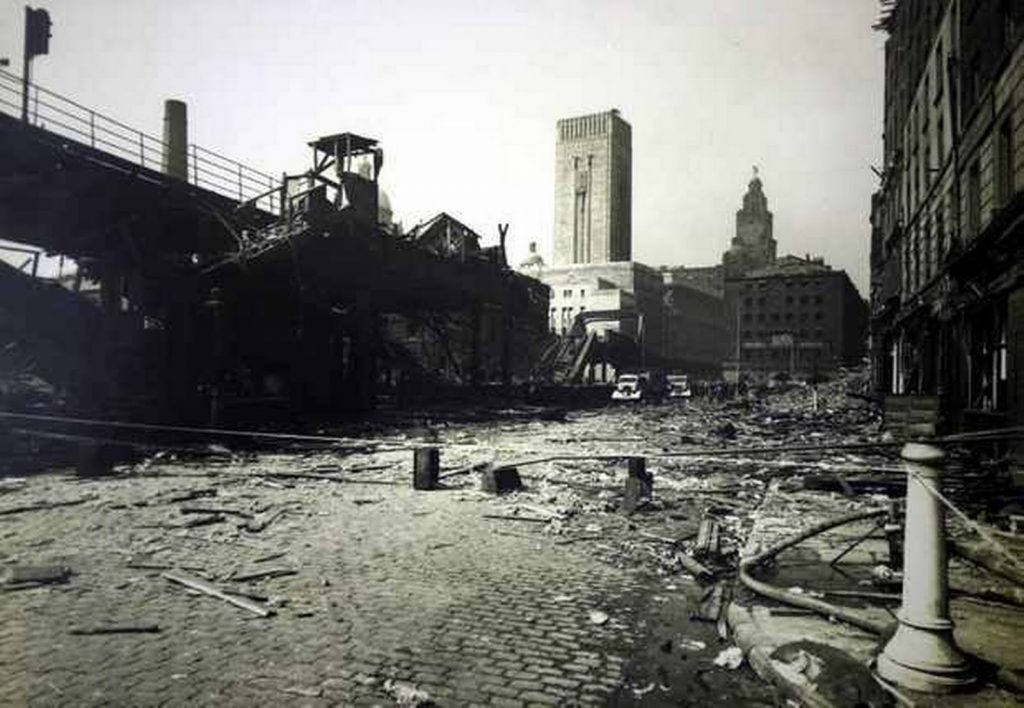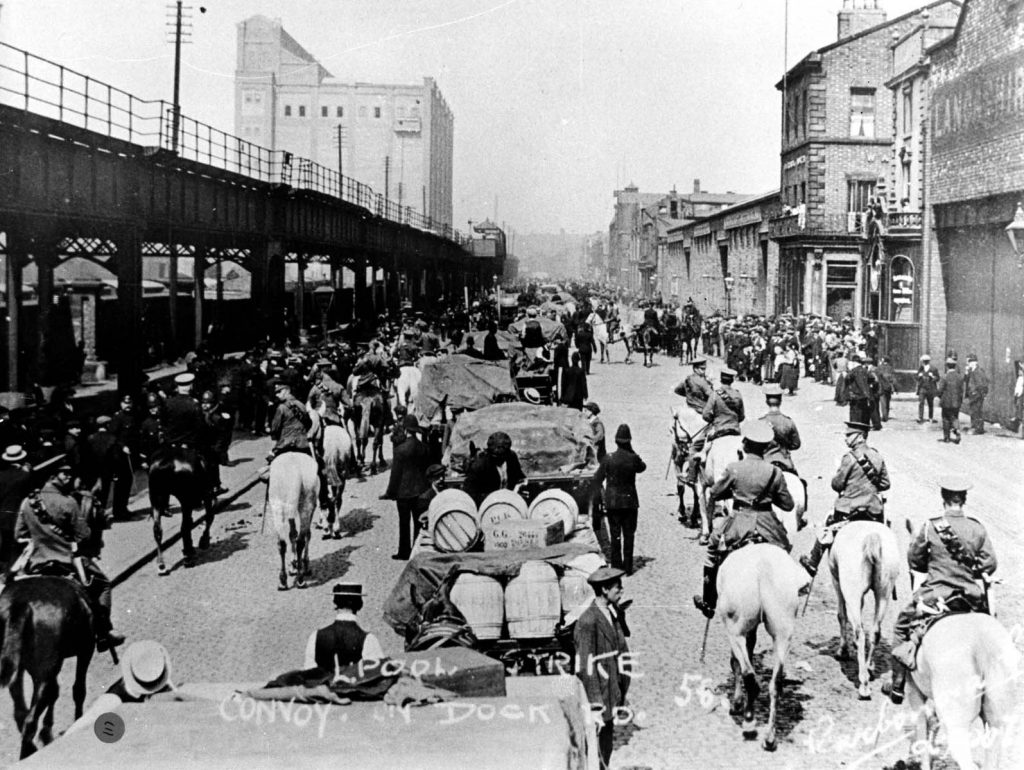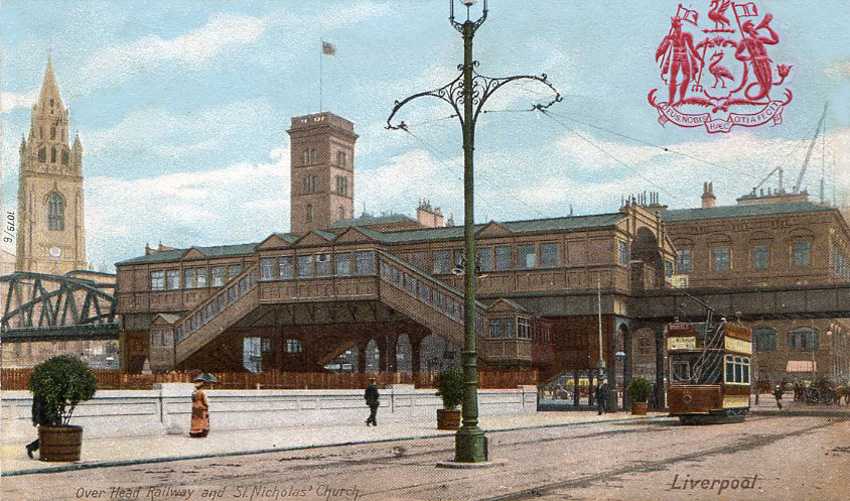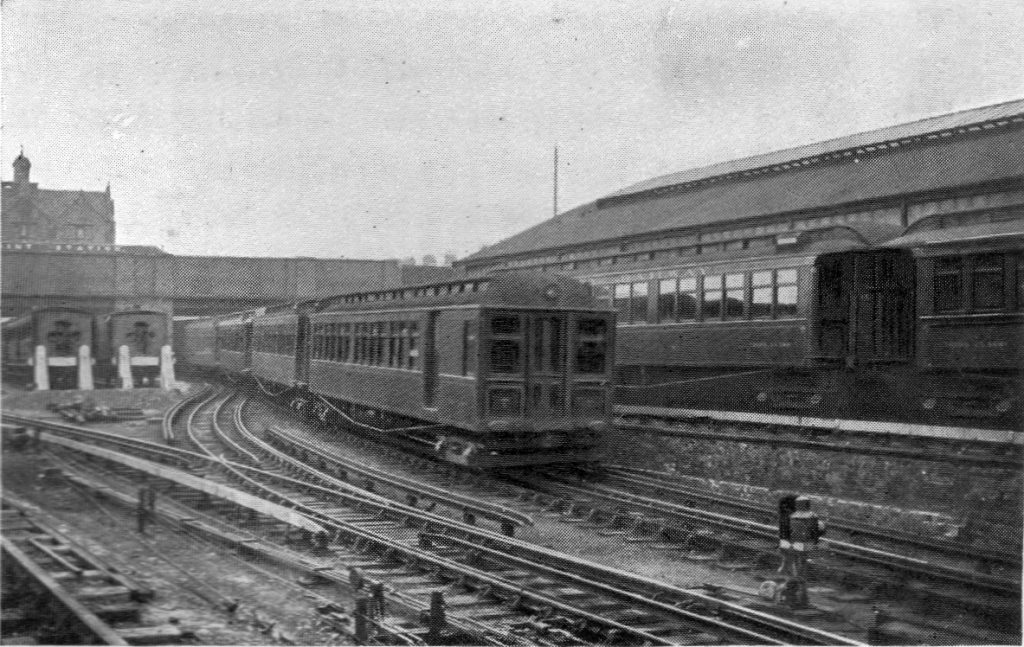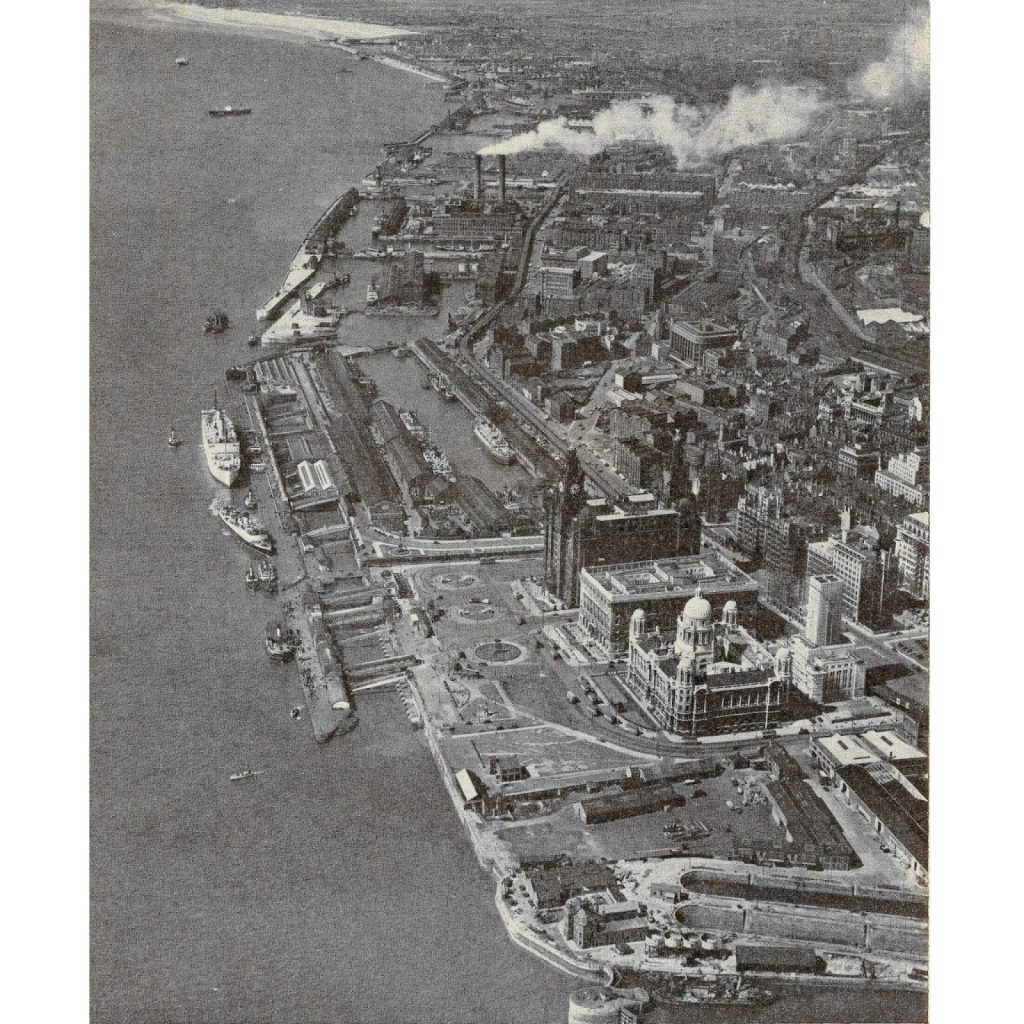The Liverpool Overhead Railway (LOR) was a train system that worked during 1893 until its closure in 1956 after serious damages caused during the World War II. It was built to make easier the transportation of the workers through the Liverpool docks. However, it rapidly became famous due to its functionality and because of the outstanding views that offered over the Mersey River, the docks and the city. It gained international recognition and was one of the most touristic elements of the city.
El Ferrocarril Elevado de Liverpool (Liverpool Overhead Railway – LOR, en inglés) fue un sistema ferroviario que estuvo en funcionamiento desde 1893 hasta su cierre en 1956 por los serios daños causados durante la guerra. Se construyo con el objetivo de facilitar el transporte de los trabajadores a lo largo del puerto de Liverpool. Sin embargo, rápidamente ganó fama por su funcionalidad y por las magníficas vistas que ofrecía sobre el Río Mersey, el puerto y la ciudad, por lo que se convirtió en un elemento turístico de Liverpool y recibió reconocimiento internacional.

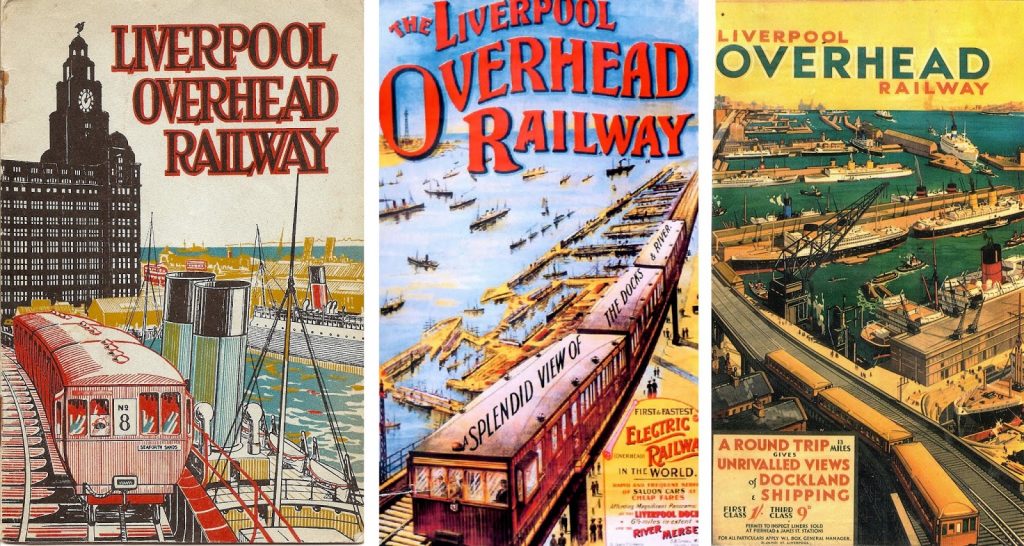
The Decadency of the LOR happened during the postwar, in the decade of the 1950. During the Second World War, Liverpool was hardly bombed by the Nazi army because of its strategic position and the economic power that the docks offered. The LOR was deeply damaged. After the end of the war, the service was closed due to most of their infrastructures were destroyed. They made a analysis that revealed that the reparation costs of the LOR would be 2 million of pounds. The company that ran the infrastructure was not able to take charges this cost and after several external funding attempts, they decided to demolish it in 1956. The Liverpool Overhead Railway was very popular in the city and the decision of demolishing it caused several protests that could not stop its dismantling.
La decadencia del LOR llegó en la posguerra, a mediados de los años 50. Durante la Segunda Guerra Mundial, Liverpool fue duramente bombardeado por el ejército nazi debido a su posición estratégica y la potencia económica que ofrecía el puerto y el LOR quedó duramente dañado. Al finalizar la guerra se decidió cerrar el servicio ya que la mayoría de sus infraestructuras habían quedado destruidas. Se realizó un estudio para estimar los costes de reparación del LOR que ascendía a dos millones de Libras esterlinas. La compañía que administraba la infraestructura no era capaz de asumir tales costes y tras varios intentos fallidos de financiación se decidió su demolición en 1956. El ‘Liverpool Overhead Railway’ gozaba de una gran popularidad en la ciudad que provocaron grandes protestas contra su demolición que no consiguieron parar su desmantelamiento.
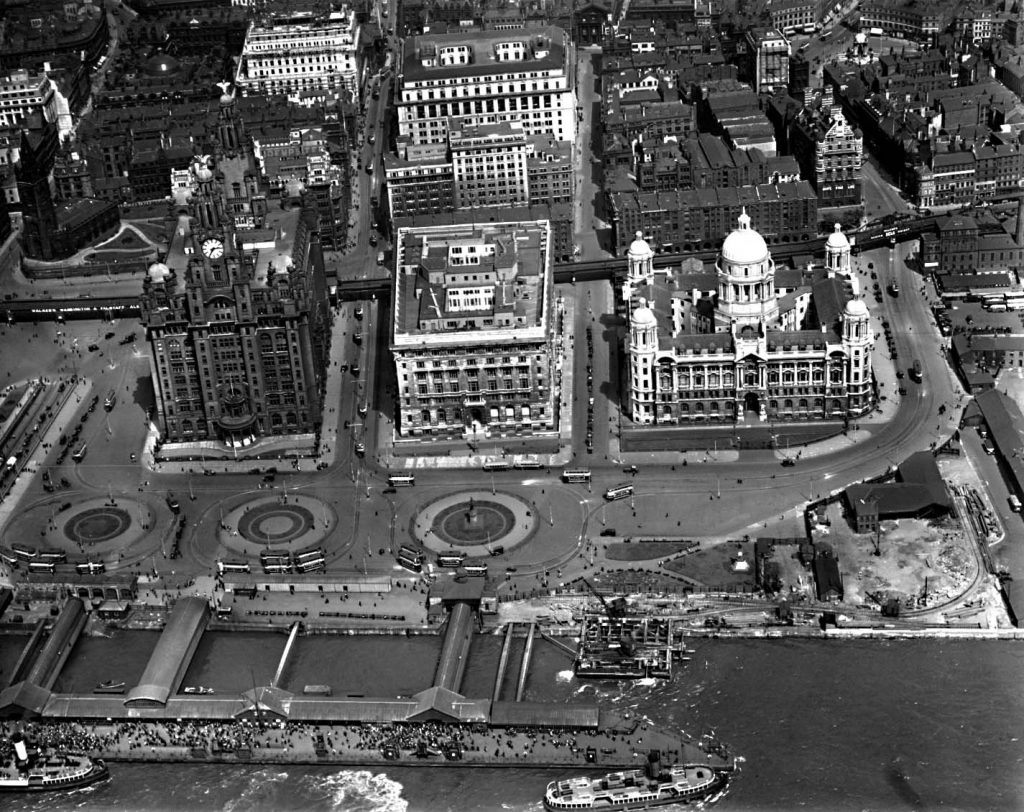
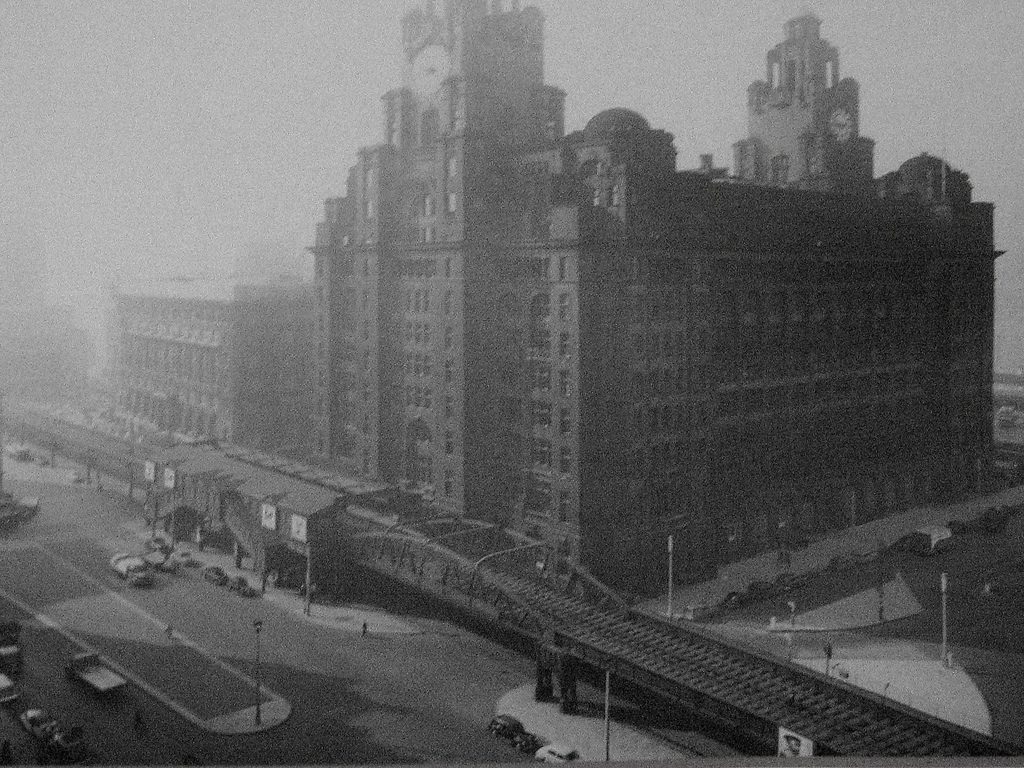
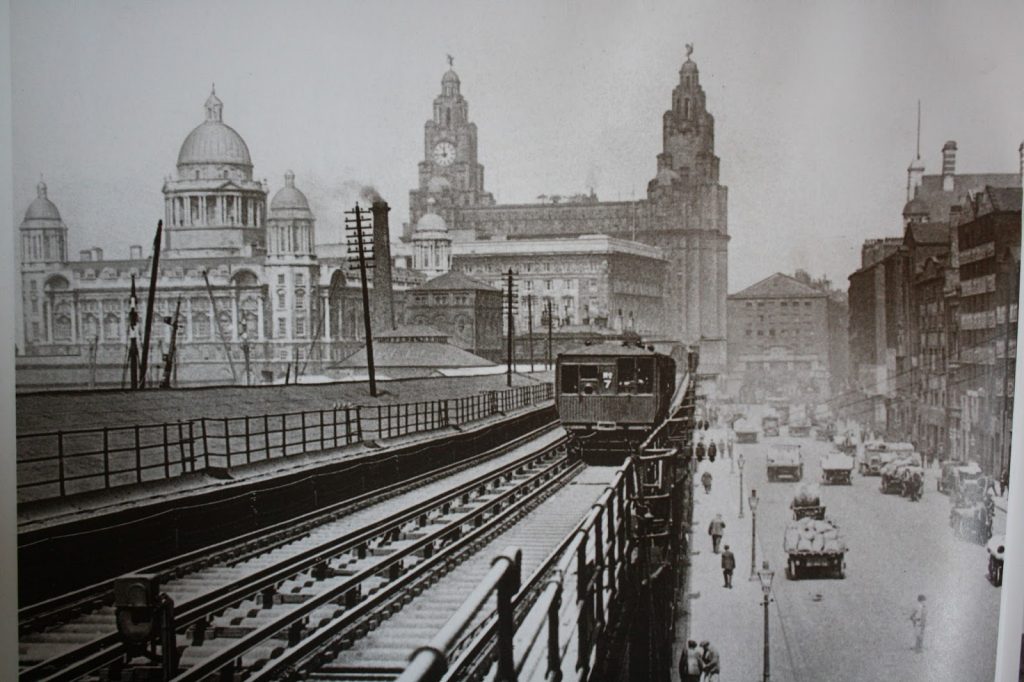
From the constructive perspective, the LOR was a success because of its low cost and the speed of its construction. Building the LOR took less than four years (from 1989 to 1893) and it had a cost of half million of pounds. The tracks are supported by a corrugated iron decking that is mainly carried on iron viaducts and beams. Nevertheless, this system had the inconvenience of being vulnerable to the corrosion.
El LOR fue un éxito constructivo debido a la rapidez y el bajo coste que supuso la obra. La construcción duró menos de cuatro años (1889-1893) y tuvo un coste de medio millón de libras en su momento. Las vías se apoyaban sobre una chapa ondulada que estaba sostenida en casi todos sus tramos mediante grandes vigas y pórticos de hierro. Sin embargo, este sistema tenía el inconveniente de que era muy vulnerable a la corrosión y se degradaba rápidamente.
Moreover, the Liverpool Overhead Railway proposed the linear development of the city along the Mersey River. After its demolition, this urban growth has disappeared and Liverpool has been expanded toward north instead of following the Mersey. The relation between the city and the river has been disappearing as well.
Desde el punto de vista urbanístico, el ‘Liverpool Overhead Railway’ propuso el desarrollo de la ciudad a lo largo del río Mersey. Tras su demolición, este crecimiento linear ha desaparecido, Liverpool ha crecido hacia el norte en lugar de a lo largo del Mersey y la relación entre la ciudad y el río se ha ido diluyendo.
Nowadays, the LOR has disappeared from the memory of the Liverpool citizens, being a forgotten infrastructure of the city. The history of the Liverpool Overhead Railway is just remembered in the Museum of the city.
En la actualidad, el LOR ha desaparecido completamente del recuerdo de los ciudadanos de Liverpool, siendo una infraestructura completamente olvidada. La historia del LOR solo se recuerda en el museo de la ciudad.
